Conference Presentations by isabelle Séguy

Cultural behaviours, like gender discrimination, influence individuals’ health and well-being. Th... more Cultural behaviours, like gender discrimination, influence individuals’ health and well-being. Therefore, in this presentation we discuss the intersection of biological and cultural issues in bioarchaeology, from the point of view of gender studies. First, we examine how women were perceived in the discipline in the past, when sciences was carried out almost only by men and centred on men. Later, with more representative participation by women in bioarchaeology, some questions begun to be reformulated, which led to a better understanding of women’s place and health conditions in the past. Thus, the second part of the presentation focuses on diet and nutrition. We show some examples of past societies in which men and women did not have the same access to nourishment. Food consumption extrapolates subsistence needs and becomes a ritual in which people eat differently depending on their gender, age, social status or ethnicity. Thus, we can identify some cultural practices that can impact individuals’ physical well-being. In conclusion, analysing men’s and women’s diet patterns is pertinent to identify and understand some gender discriminations.
Papers by isabelle Séguy
Organic Optoelectronics and Photonics II, 2006
In this study, we presented high-performance flexible organic light-emitting diodes (FOLEDs); to ... more In this study, we presented high-performance flexible organic light-emitting diodes (FOLEDs); to do so, we prepared indium-tin oxide (ITO) thin layers by ion beam sputtering (IBS) on polyethylene terephtalate (PET) substrates in soft low temperature conditions. The IBS technology seems well adapted to us to adjust the conduction level of the interface films to the one of the various organic

International Journal of Electronics, 1974
New results are presented concerning the anti-parallel or push–pull Trapatt circuit. This circuit... more New results are presented concerning the anti-parallel or push–pull Trapatt circuit. This circuit consists of two diodes placed at either end of a transmission line, approximately a half-wavelength long. This circuit increases the power impedance product over the single diode circuit and provides a lower spurious harmonic content in the output. The analysis uses the periodic impulse response and ‘pseudo -impedance’ techniques. It explains why the circuit is stable in the anti-parallel configuration but will not work in the parallel configuration. Various self-compensation mechanisms are demonstrated for the circuit and in particular it is shown how mismatched diodes will still oscillate as a pair. The experimental work has been centred around I GHz with efficiencies around 35%. A design has been evolved for a three-slug filter which gives a good match to the diodes and is easy to adjust. The waveforms have been measured with an ultra-broad-band voltage probe and 14 GHz bandwidth sampling oscilloscope and these confirm many features of the theory. The circuit works well over a wide range of conditions. In particular it has been made to work with an lmpatt diode at one end and a Trapatt diode at the other. Contrary to expectation the oscillations took a very long time to build up.
HAL (Le Centre pour la Communication Scientifique Directe), 2018
HAL (Le Centre pour la Communication Scientifique Directe), 2019
HAL (Le Centre pour la Communication Scientifique Directe), 2015
Properties and economic inequalities to the test of crises. France, late seventeenth - first quar... more Properties and economic inequalities to the test of crises. France, late seventeenth - first quarters of eighteenth century

Presses universitaires de Rennes eBooks, 2016
L’illégitimité est un phénomène démographique marginal tout au long l’époque moderne, bien que de... more L’illégitimité est un phénomène démographique marginal tout au long l’époque moderne, bien que de proportion très variable d’une région à une autre et fluctuant au cours de la période. C’est pourtant un objet d’étude majeur en histoire sociale car il croise les grandes thématiques de l’enfance, de la famille, du mariage, les études genrées, l’histoire du droit, etc. L’illégitimité est un thème plus fécond en sociologie, en droit, en économie, en histoire sociale et culturelle qu’en démographie quantitative. Longtemps étudiée à travers le prisme déformant de la rigueur morale hérité du XIXe siècle, l’illégitimité se révèle être un formidable indicateur des changements que subissent les populations de l’Ancien Régime. Sa progression, entre le début du XVIIe et la fin du XVIIIe siècle, traduit sans doute moins l’essor des relations extraconjugales que la lente adaptation des populations françaises aux nouvelles règles de mariage, et donc de filiation, que l’Église comme l’État entreprennent d’imposer après le concile de Trente. Les variations du taux d’illégitimité sont corrélées aux mutations sociales et à l’évolution des mentalités, aux difficultés économiques qui retardent les unions, aux migrations et aux décès prématurés qui privent du promis, à la place faite aux femmes et aux plus vulnérables. Sa mesure à partir de l’état civil ancien ne peut être qu’incertaine, surestimée ici, sous-estimée là, car un grand nombre de facteurs influencent et nuancent l’intensité de ce phénomène.Illegitimacy remains a marginal demographic phenomenon during all early modern period, although with high regional variations and chronological fluctuations in its intensity. Nevertheless, illegitimacy is a major research topic in social history which unites various themes, such as childhood, family, marriage, inheritance systems, gender, history of law, etc. Approaches to the subject draw more on sociology, law, and economic, social and cultural history than on quantitative demography. Studying illegitimacy freed from the social and moral background, inherited from the 19 th century, is still difficult; when illegitimacy mainly reflects changes affecting population lives during Ancient Regime. Its progression, between the beginning of 17 th and the end of 18 th century, is less correlated to the development of extramarital relations than to slow adaptations of French populations to new rules, in marriage legislation, and thus filiation, which Church as State imposed after Council of Trent. The variations of illegitimacy rate are correlated with social transformations and evolution of mentalities, with economic difficulties which delay marriages, with migrations and premature deaths which deprive of the promise, with women and most vulnerable social status. Its measure from parish registers is obviously uncertain, underestimated here, overestimated there, as so many factors influence and modify the intensity of this phenomenon
Population, English edition, 2018
HAL (Le Centre pour la Communication Scientifique Directe), 2015
HAL (Le Centre pour la Communication Scientifique Directe), 2012
HAL (Le Centre pour la Communication Scientifique Directe), 2014
HAL (Le Centre pour la Communication Scientifique Directe), 2014
HAL (Le Centre pour la Communication Scientifique Directe), 2011
Population, 1993
Séguy Isabelle. Thomas (Louis-Vincent) — La mort en question. Traces de mort,mort des traces. In:... more Séguy Isabelle. Thomas (Louis-Vincent) — La mort en question. Traces de mort,mort des traces. In: Population, 48ᵉ année, n°4, 1993. pp. 1116-1118
HAL (Le Centre pour la Communication Scientifique Directe), 2011
HAL (Le Centre pour la Communication Scientifique Directe), 2021
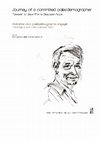
Presses universitaires de Provence eBooks, 2021
This book is dedicated to Jean-Pierre Bocquet-Appel, anthropologist and biologist, one of the fou... more This book is dedicated to Jean-Pierre Bocquet-Appel, anthropologist and biologist, one of the founding fathers of palaeodemography in France, who died in 2018. Known and recognised worldwide, he contributed to the development of new techniques for estimating the age at death of skeletal assemblages and promoted the introduction of estimators in palaeodemography. He also participated in the emergence of spatial demography and multi-agent modelling, particularly of Neolithic farmers. We owe him a considerable advance in the understanding of demographic processes linked to the great transitions that humans have experienced in different parts of the world with the discovery of the signature of the demographic transition implied in the passage of societies from a collection economy to an agricultural economy. This book offers a journey to the heart of his life as a researcher, taking in turn, in a diachronic and multidisciplinary approach, anthropological demography from prehistory to the contemporary period. It also paints a generous portrait of this committed man who has never ceased to work for his discipline, whether through a reflective approach to the history of science and epistemology or the transmission of his knowledge to younger generations. This book invites you to an original and innovative experience on the borders of a rare discipline, paleodemography. Cet ouvrage est dédié à Jean-Pierre Bocquet-Appel, anthropologue biologiste, l'un des pères fondateurs de la paléodémographie en France, disparu en 2018. Mondialement connu et reconnu, il a contribué au développement de nouvelles techniques d'estimation de l'âge au décès d'assemblages de squelettes et promu la mise en place des estimateurs en paléodémographie. Il a également participé à l'émergence de la démographie spatiale et de la modélisation de typemulti-agent en particulier des agriculteurs néolithiques. Nous lui devons une avancée considérable dans la compréhension des processus démographiques liés aux grandes transitions qu'ont vécu les hommes en différents points du globe avec la découverte de la signature de la transition démographique impliquée dans le passage des sociétés d'une économie de collecte à une économie agricole. Cet ouvrage offre un voyage au coeur de sa vie de chercheur, reprenant tour à tour, dans une démarche diachronique et pluridisciplinaire, la démographie anthropologique de la Préhistoire jusqu'à la période contemporaine. Il brosse également un portrait généreux de cet homme engagé qui n'a eu de cesse d'oeuvrer pour sa discipline, que ce soit à travers une approche réflexive sur l'histoire des sciences et l'épistémologie ou la transmission de ses savoirs auprès de jeunes générations. Cet ouvrage convie ainsi le lecteur à une expérience originale et innovante aux confins d'une discipline rare, la paléodémographie. ANNA DEGIOANNI (DIR.

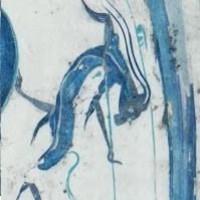
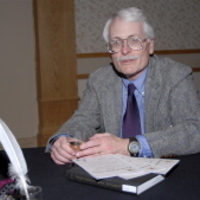





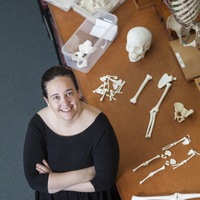
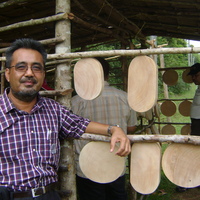

Uploads
Conference Presentations by isabelle Séguy
Papers by isabelle Séguy